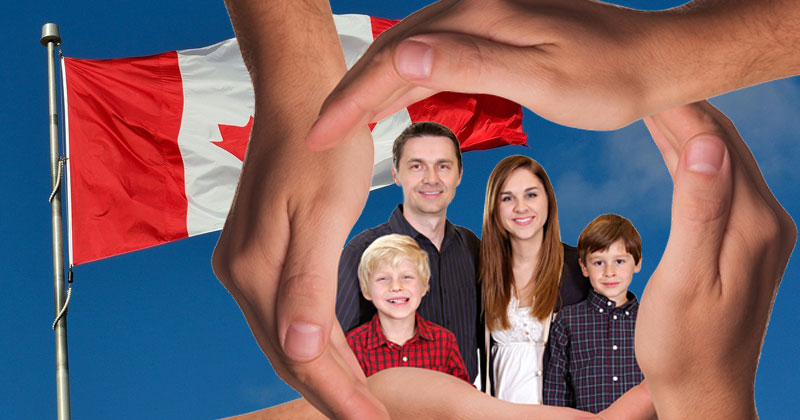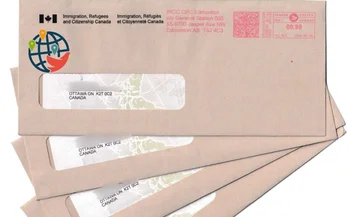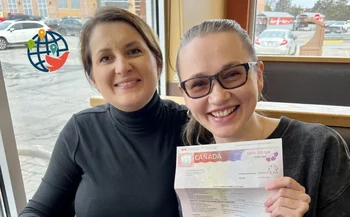The difference between temporary and permanent residence permits in Canada

And how do I get these documents?
Thousands of immigrants arrive in Canada each year in search of a better life. Many aspire to make the move but struggle to comprehend the intricacies of the Canadian immigration system and the process of obtaining legal status. Allow me to clarify that immigration to Canada diverges from that of other countries, and I'll guide you through the details.
So, what's the typical immigration process in most countries? You need to acquire a temporary residence permit based on various grounds, such as employment, education, family ties, and the like. This permit grants you legal stay in the country for a specified duration, which could be a year or more, depending on the country. The advantage is that you don't have to leave the country during this period. However, there are drawbacks as well, as these permits typically require regular renewal.
You reside in the country with a temporary residence permit for a specific number of years, after which you can transition to a permanent residence permit. Following a few more years of residing as a permanent resident, you become eligible to apply for citizenship.
Canada's immigration system
The Canadian immigration system differs significantly. Instead of issuing temporary residence permits, Canada designates temporary residents as individuals holding visitor visas, student visas, or work visas. In other words, rather than possessing a temporary resident card, you will have a visa. Importantly, obtaining a temporary visa is not a prerequisite for acquiring a permanent residence permit. To attain permanent residency, individuals typically need to fulfill the criteria outlined in one of the over 120 available immigration programs.
In simpler terms, the process unfolds as follows: you select a program for which you meet the criteria, submit an online application, and patiently await the outcome. Most programs use a points-based system and occasionally conduct immigration draws. If your score is sufficient, you receive an invitation. Until then, you continue with your regular life in your home country. Upon receiving an invitation, you obtain an immigrant visa in your passport, travel to Canada, and obtain a permanent resident card (PR card). This card serves as your identification, featuring your photo, first and last name, gender, date of birth, and other relevant details. Importantly, entire families can immigrate together.
Direct route to permanent residence
A straightforward pathway to permanent residence exists through various immigration programs: for skilled professionals, trade workers, self-employed individuals, entrepreneurs, graduates of Canadian universities, and so on. Points are allocated based on diverse factors such as age, English and French proficiency, education, and more.
This direct route to Canadian permanent residency involves applying for an immigration program, leading to the grant of permanent residency within approximately six months to a year. Many applicants may qualify for certain immigration programs, but not everyone. For those who fail to meet requirements or accrue sufficient points, alternative routes to obtaining coveted permanent residence in Canada are available, and I will elaborate on those as well.
Once you secure a permanent residence permit, you enjoy nearly the same rights as Canadian citizens. You have access to free healthcare, the freedom to work, the flexibility to reside anywhere in the country, and legal protection for your rights. However, there are some restrictions, such as the inability to vote, run for election, or hold certain political offices. Unlike temporary residence permits, there's no need for renewal; you receive the permit once, and that's it.
After residing as a permanent resident for three years, you become eligible to apply for Canadian citizenship. Notably, the Canadian passport ranks among the strongest globally.
Other ways to obtain a residence permit
For those who do not meet the criteria or score lower in the immigration programs, there are alternative routes to achieving permanent residence, and temporary visas play a crucial role in this process. It's important to note that if you come to Canada for study, work, or tourism, the conditions for obtaining a residence permit are the same as those applying from their home country. Working for a set number of years doesn't automatically grant you a permanent residence permit. The process still involves applying for one of the 120 immigration programs and meeting the requisite number of points.
So, what's the advantage of using temporary visas? Engaging in work and study serves as excellent stepping stones for eventually obtaining permanent residency. I'll also elaborate on the utility of tourist visas and how they can contribute to the overall process.
Immigration through work
Let's delve into the realm of employment opportunities in Canada, starting with the Temporary Foreign Worker Program. Once you secure a visa through this program, you're permitted to reside and work in the country for the duration of its validity. An advantage lies in the existence of special immigration programs tailored for temporary workers. These programs typically mandate a work contract or a specific period of work experience in Canada, ranging from six months to a year depending on the program, and there are numerous such programs available.
Even in programs that don't require a work contract, significant additional points are often awarded if you secure employment in Canada or have prior work experience in the country. In essence, if you find yourself lacking points or not meeting program requirements, gaining work experience in Canada substantially enhances your prospects of attaining permanent residency.
However, a work visa has some limitations. Firstly, obtaining a visa is contingent upon securing a Canadian employer willing to hire you. This process is not easy, as employers must navigate through paperwork and pay fees for employing a foreign worker. While some companies undertake this process, it's essential to understand that locating such employers can be challenging. Our website features a dedicated section offering insights on job hunting in Canada, encompassing tips on CVs, finding an employer, avoiding scams, and more.
Another noteworthy restriction is that, in most cases, changing employers isn't permissible. If you secure a job with a specific company, you're typically required to remain with that employer until you obtain your permanent residence permit.
Immigration through study
I particularly favour the pathway to immigration through education. Securing a student visa involves enrolling in a university or college, a process made simpler by the absence of entrance exams. The main requirement is demonstrating proficiency in English, which can be proven through a language test. Alternatively, if your English level is low, you can take an English course to prepare for university, eliminating the need for a language test.
A student visa permits you to stay in the country throughout your entire period of study. The advantage lies in the opportunity to enroll in a program lasting 1-2 years, providing you with higher education and a profession in demand in Canada. While studying, you have the right to work part-time, but with restrictions — 20 hours per week during the academic year and 40 hours per week during vacations. The most significant advantage is that after completing your studies, you receive a work permit. For most employers, it is much easier to hire someone already in Canada with the right to work and a Canadian education.
Most immigration programs recognize the value of completed education and work experience in Canada, awarding additional points for these qualifications. Special programs also exist for graduates, and having gained work experience, you can leverage programs for temporary foreign workers. Similar to working in Canada, your chances of obtaining permanent residency significantly increase.
For those aspiring to bring their families, entering a university or college allows your spouse or common-law partner to obtain a work visa not tied to a specific employer. They are free to seek employment in Canada and work full-time. Alternatively, your spouse or partner can pursue studies while you work, and your children can attend a free public school. We have numerous articles providing detailed information on education in Canada and immigration through this avenue, featuring insights from students sharing their experiences.
The primary drawback of immigration through education is the associated cost. To cover a year of study and living expenses in Canada, it is recommended to have savings of at least US$20,000 for an individual and more for a family. Tuition fees are not included. While employment can partially offset these costs, it's essential to budget for tuition fees and living expenses before the trip.
Important update: As of January 2024, the Canadian Minister of Immigration announced certain restrictions on student visas and post-graduate work permits.
Immigration on a tourist visa
Now, let's explore the option of a tourist visa, or as it's formally termed, a visitor visa. Typically granted for six months, these visas do not permit work or study, allowing only travel within Canada or participation in language courses. The question arises: why opt for a visitor visa?
Firstly, it serves as a platform for job hunting. While actual employment is not allowed, you can distribute your CV and attend interviews, which can be more effective than job searching from abroad. If an employer expresses interest in hiring you, the next step would involve transitioning from a visitor visa to a work visa.
The second common strategy with a tourist visa involves truck driver courses. Truck driving is a sought-after profession, but it requires a Canadian license. You can arrive on a tourist visa, enroll in a driving school, and subsequently seek employment. Following this, you can change your visa to a work visa and then proceed to apply for permanent residence.
We specialize in Canadian immigration and offer comprehensive services. Our team includes licensed immigration consultants, and we can facilitate enrollment in a Canadian English school online, assist in selecting a Canadian university or college and study program, handle visa applications, and guide you through the process of obtaining permanent residency.
Contact us for help.
Ivanna Pavlenko, regulated Canadian immigration consultant
















